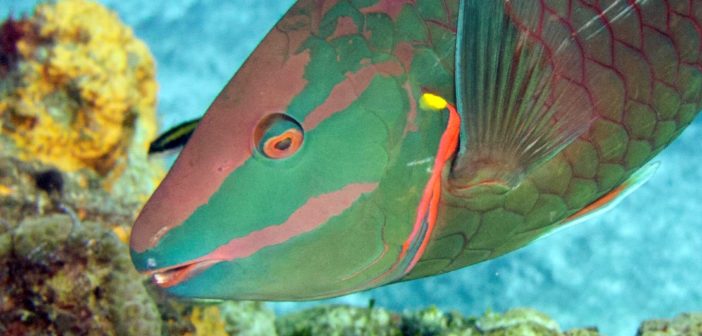Snorkeling and diving in the Mexican Caribbean is a fabulous experience, and we must strive to keep it that way. Our oceans are under stress due to our warming planet, and another particular threat to these gorgeous reef fish is sunscreen. Chemical sunscreens use toxic chemicals which harm the coral and the fish. When snorkeling or swimming in the ocean, please use Mineral Sunscreens! Mineral sunscreens will help in keeping our reef fish healthy!
Cozumel is my very favorite place to snorkel. The water is clear, blue and warm, and the reefs are full of colorful tropical fish to look at! The island is one of the top five scuba diving destinations in the world. If you snorkel in these crystal clear and calm waters, these are the 5 most colorful reef fish you will see.
Angelfish
The three most common angelfish species seen in the Caribbean are the Queen Angelfish, French Angelfish, and the Gray Angel. Angelfish are fascinating to watch because they always travel in pairs since they mate for life. It is very rare to see a lone angelfish! Angels are also “cleaner fish” for larger pelagic life.
Butterfly Fish
The Butterfly Fish are related to the Angelfish, but are much smaller. They, too, are almost always in mated pairs. Butterfly fish tend to be a little shy, swimming away quickly when one gets too close! Like Angels, they are “cleaners.”
Parrot Fish
The Parrot Fish is not only colorful, but indispensable on the reef. Parrots get their name from their tough teeth and “beakish” mouth, which they use to grind algae out of hard coral, and later excrete to make up the sand on the reef! With coral in danger because of warming water temperatures, parrots are also in trouble since they feed on coral.
File Fish
I love File Fish! They have the strangest mouths and are so “flat,” or “skinny.” They always seem to be watching for snorkelers and divers, and they twist and turn to get a good look! They are so colorful!

The adult White Spotted File Fish is very orange. I love their retractable spine, it is like a crown!
Trigger Fish
Another fish that always excites me is the beautiful Trigger Fish. The Queen Triggers are so beautiful. They look as though someone painted them! Trigger Fish need to be treated warily, as they can take offense, especially when making their egg casings.
A reef is such a busy place, with small fish and big fish going about the business of their lives. It is always fun to just watch the fish as they swim, eat, and clean each other. The colors often do not seem real. Tropical fish are nature’s art! It is up to all of us to make better decisions to keep our ocean and ocean ecosystem healthy. I want future generations to enjoy our ocean reefs as much as I do!




















